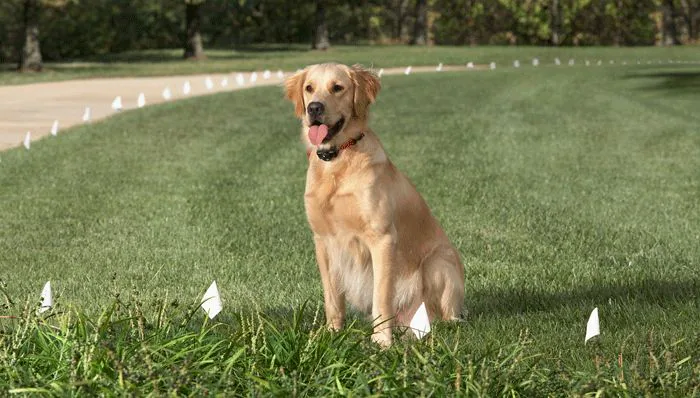Learn How To Train Dog With Electric Fence. Electric Dog Fence Training An Overview of Dog Fence Training Training your dog on the fence is the most important Step in establishing an electric dog fence. Your dog should be content in its confinement after around two weeks. The system is only useful with training. Dog training is straightforward. All you have to do is make a commitment to three sessions of 15 minutes each per day for two weeks.
A summary of the training is provided below. The dog must be taught to turn back rather than sprint over the fence when they hear the beep, which is the most crucial lesson to impart. To learn more about each training step in greater depth, read the information below.
Learning is Easy

Introduce the Dog to The Fence in the First Step.
The dog must first be trained to understand that the warning beep and the boundary flags signal a need to turn and retreat. It is crucial to provide the groundwork for the correction to be applied in the following phase so that the dog is aware of what is expected of them and may learn how to avoid receiving the reprimand.
Disabling the stimulation is crucial for Step One. You may accomplish this with the extreme Dog Fence by setting it to beep-only mode.
Making the Collar Fit
The optimal location for an electric dog fence receiver collar on a dog’s neck is high up, just below the dog’s ears. Under the dog’s head, at the front of the dog’s neck, should be the receiving box. The collar should fit tighter than you anticipate. One finger should fit snugly between the collar’s probes and your dog’s neck. The collar is too loose if you can freely twist it around the dog’s neck; otherwise, the dog won’t feel the reprimand.
*On a related point, ensure your dog’s containment collar is kept on for 12 hours daily. Long-term use of a collar can result in pressure necrosis, a disorder that results in red, painful areas on the dog’s neck. If you ever notice any red patches on your dog’s neck, take the collar off immediately and don’t put it back on until the lesions have healed.
Playtime
Start each session with some play. Starting on a good note is playing with your dog. The likelihood that your dog will remain engaged and ready to learn will increase. Additionally, feeding dogs does wonders. Small pieces of roast meat, chicken, or hot dogs can greatly help during training.
Preparation for Step One
In the first step, you walk your dog on a long leash fastened to its ordinary collar. You don’t want to strain your dog’s neck’s contact points, so don’t attach a leash to the receiver collar.
Your dog may approach the flags, but only encourage him to do so sometimes. Let him make his way over to them. When he does, the collar’s beeper will sound. Give the dog the “no” command, after which you should take him back into the safe area and away from the flags. In this first session, make sure to instil a sense of urgency. Give the dog praise and a treat when he crosses back over into the safe area. Use various locations of the yard to repeat this approach during each training session for the first two days, at least three times daily.
Every session should begin and end with a victory lap! Your dog will run after you if you do. Complete a brief round of the safe area far from the training flags. Your dog is given a victory lap to let him know the yard is secure.

Introducing the Correction in Step 2
The fix has now been included in our training. This demonstrates to the dog that a static charge will result from disobeying the beep. The first Step’s lessons—that the dog must turn and flee anytime it hears the warning beep—are reinforced.
The boundary guidelines presented in Step One will become more firmly established after the correction. The addition of the correction will strengthen the dog’s conditioning to turn and retreat when the beep is heard.
Following the initial correction, you can change the correction’s intensity so that it is potent enough to get the dog’s attention but not overpowering. You, the owner, must maintain your composure and self-assurance so that the dog won’t become anxious.
It would be best to begin by setting the correction level to the lowest possible for small or delicate canines. Large, independent dogs can be in a high setting, while medium-sized dogs can use a medium setting.
Each dog requires a different level of discipline because they are all unique. Until the dog receives his first reprimand and observes his behavior, you are essentially speculating. If you need help determining which correction level to employ, guess high for dogs with strong personalities and low for dogs with calm dispositions.
Because they are concerned about injuring the dog, some individuals set the correction level very low. This is not, however, a wise course of action. If the reprimand is applied too lightly, the dog may feel like nothing is wrong and go into the street.
